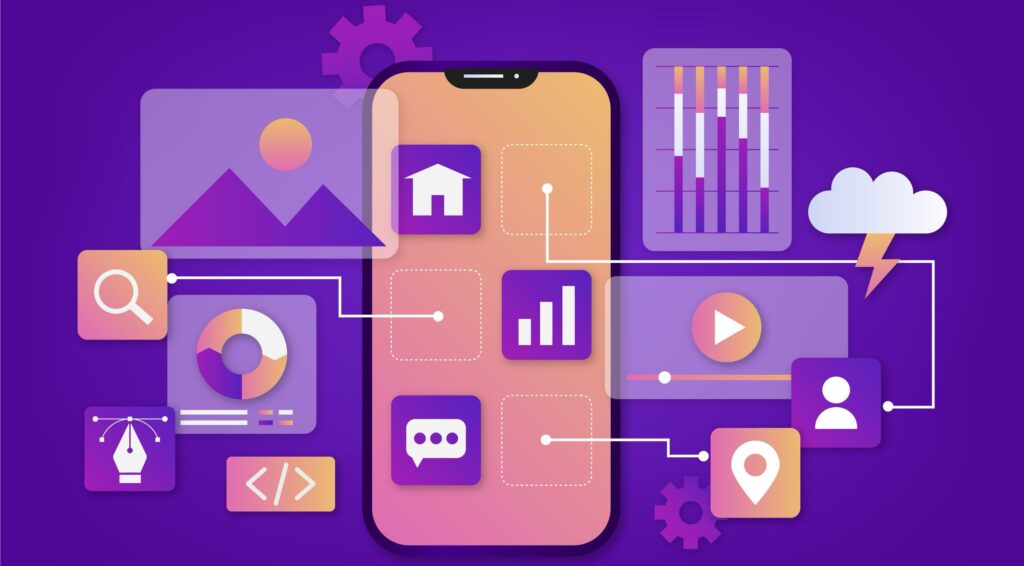In the early days of mobile app development many companies treated their applications like extensions of their desktop websites, offering only the most basic functionality and information. The function of mobile apps, however, has changed substantially due to the change in web traffic trends, where the vast majority now comes from mobile devices.
These days, consumers anticipate that mobile apps will do more than merely resize the desktop experience. They expect it to include comprehensive features optimised for the portability and power of mobile devices. However, this makes performance testing of mobile apps very important.
The change in user expectations has made it such that it is not enough to just reduce desktop functionalities for a mobile app. Apps for mobile devices are expected to deliver an experience that is as good as, if not better than the website in terms of design and user experience (UX).
Meeting the changing demands and preferences of consumers has made it imperative for businesses to optimise mobile apps for device-specific usability. Consequently, ensuring that mobile apps run properly is of the utmost importance.
Why is Performance Testing of Mobile Apps Important?
The growing dependence on smartphones and the rich ecosystem highlights the importance of performance testing of mobile apps. To further explain why this is crucial, consider the following:
Compatibility with a variety of devices: Every smartphone has its own unique set of specs, screen size, and operating system. Key to user happiness and app success is performance testing, which guarantees that an app provides a constant and seamless user experience across these varied devices.
Adapting to fluctuating network conditions: From lightning-fast Wi-Fi to sluggish mobile data connections, users use mobile apps on a wide range of devices. The app’s responsiveness and functionality are tested under various settings to offer a dependable experience for users with varying internet speeds.
Maintaining fluid user interactions: There is a broad spectrum of ways users engage with an app. Optimising these interactions is what performance testing is all about. It makes sure the app responds quickly and appropriately to user inputs, especially when faced with challenging situations like heavy user traffic.
Finding and fixing bottlenecks: Through performance testing of mobile apps, developers may pinpoint exactly where the app is leaking memory, has slow loading speeds, or is draining the battery. Resolving these issues prior to release reduces the likelihood of unfavourable customer reviews and uninstallations.
App quality maintenance: As apps undergo constant upgrades and new feature additions, performance testing of mobile apps becomes an unavoidable requirement. It keeps quality standards high over time by making sure that new releases don’t slow down the app.
Contributing to corporate objectives: Mobile apps serve as an important point of contact for numerous companies. The purpose of performance testing is to guarantee that these apps help achieve company objectives, including increasing sales, by offering a pleasant and interactive experience for users.
Conformity to app store standards: App stores have criteria and rules that apps must fulfil. App store acceptance is highly dependent on loading speeds and responsiveness; performance testing guarantees conformity with these criteria.

KPIs of Performance Testing of Mobile Apps
Critical metrics used to assess an application’s functionality and effectiveness are known as key performance indicators (KPIs). Developers may optimise and enhance the user experience with the help of these key performance indicators (KPIs), which offer insights into various elements of app performance. Key performance indicators used in mobile app performance testing include:
Application response time: User satisfaction is greatly affected by the app’s overall responsiveness, which includes how fast it processes user inputs and loads content.
App crashes: Stability can be indicated by the frequency and context of app crashes. User retention can be greatly affected by an excessive crash rate.
Throughput: How much data may be sent via a network in a specific amount of time is called throughput. It sheds light on the app’s data transfer performance under different network scenarios.
Time to first byte: The elapsed time between the start of a request and the moment the first byte of the response is received is measured as time to first byte (TTFB). This metric shows how quickly the server or backend can process requests.
API latency: API latency is the time it takes for a server to react after a user presses a button. Keeping the user experience fluid and responsive relies on optimising API latency.
Power consumption: Evaluate the power consumption of an app while it’s running. Users may become dissatisfied and uninstall apps if they drain the battery quickly.
Memory consumption: This a key performance indicator as it measures how much memory an app utilises on the device. A decrease in overall device performance, as well as problems in individual apps, can result from excessive memory utilisation.
Load times: This important key performance indicator evaluates how long it takes for an app’s content to completely appear on the screen once the user hits a button. Users are more likely to be satisfied with an app if it has fast load times; otherwise, they may become frustrated and uninstall it.
DNS lookups: The amount of time it takes for the app to resolve the user’s DNS query might affect how quickly the app loads and how responsive it is generally.
App launch time: This metric tracks how long it takes for an app to start up once a user presses its icon. In order to keep people on the app, your app needs to load quickly so they can use all of its features right away.
Challenges in Performance Testing of Mobile Apps
Integrating real-world contexts
Network speed variability: Mobile apps are commonly utilised on a wide range of network circumstances, from ultra-fast Wi-Fi to slower 3G or 4G networks. It can be rather tough to precisely simulate all of these scenarios, but it is crucial to make the app work well in every scenario.
Variety of users: Real-world circumstances involve varying numbers of app users. In order to find out how the app handles heavy loads, as during peak usage times, performance testing needs to mimic various user load levels.
Recording a diverse range of metrics
Performance metrics for devices: Things like app launch time, memory utilisation, and battery life are part of this category. It is important to record the app’s impact on and response to different device characteristics during testing.
Server/API performance: This includes efficient data transfer between the app and the web server and how the server handles app requests, especially for server-side-processing apps.

Identifying problems and causes
Find bottlenecks: Finding the code, server response, or network delays causing performance issues with the app or its environment is difficult.
Root cause analysis: Beyond discovering issues, understanding their underlying causes is essential. This calls for in-depth research and knowledge of the app’s internal workings as well as the external elements impacting its efficiency.
Testing on multiple devices and networks
Device fragmentation: There is a wide variety of smartphones, each with its own unique set of hardware specs, screen size, and operating system version. Maintaining consistent performance throughout this range is no easy feat.
Conclusion
Performance testing has become a cornerstone for the success of mobile applications. It is not just about ensuring an app works smoothly; it’s about providing users with an experience that is seamless, efficient, and enjoyable. Performance issues can lead to negative reviews, reduced user engagement, and ultimately, the loss of valuable customers. Hence, investing time and resources in rigorous performance testing is not just beneficial, but essential for any mobile application’s long-term success.
However, it is also essential to have the right partner to guide you through the complexities of mobile app development and performance testing. This is where Appscrip comes into play – your trusted ally in crafting mobile applications that are not just visually appealing but are robust performers as well.
Take action today:
Optimise Your App: Don’t let performance be an afterthought. Make it a priority with Appscrip’s holistic development approach.
Tailored Solutions: Benefit from customised strategies that align with your app’s specific needs and user expectations.
Ready to elevate your mobile app’s performance? Reach out to Appscrip now and set the foundation for a successful, user-approved mobile application. Click here: to learn more about our products and services, rest assured we can assist you in achieving excellence in mobile app performance.









